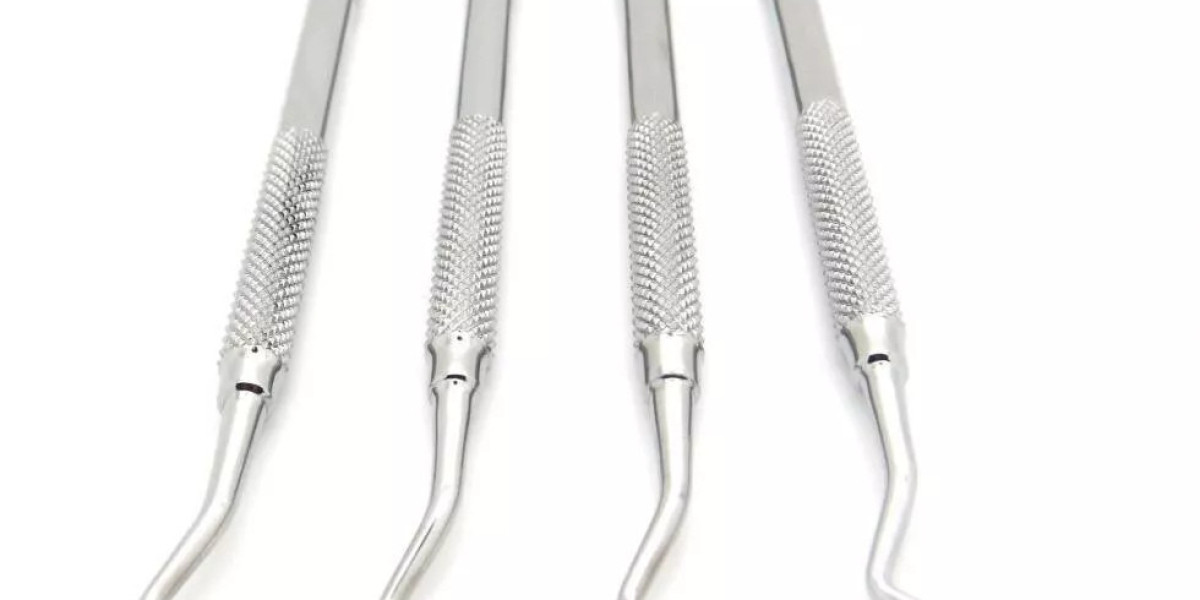When it comes to oral surgeries and extractions, dental elevators play a crucial role. These specialized tools are designed to loosen teeth and separate them from the surrounding bone and ligaments before extraction. While they look simple, the correct handling of elevators requires proper technique, knowledge, and precision. Inexperienced or careless use can cause complications, injuries, or unnecessary trauma to the patient’s oral cavity.
In this article, we’ll explore the common mistakes to avoid when using dental elevators, why they happen, and how to ensure the safe use of these vital dental instruments.
Why Proper Use of Dental Elevators Matters
Before diving into mistakes, it’s important to understand why proper use of dental elevators is so critical:
They reduce the risk of tooth fracture.
Proper technique minimizes trauma to gums and surrounding tissues.
They decrease the need for excessive force during extraction.
When handled correctly, they prevent damage to adjacent teeth.
They improve patient comfort and speed up recovery.
Clearly, these benefits can only be achieved if common mistakes are avoided.
Mistake 1: Using the Wrong Elevator Type
There are different types of dental elevators, including straight, periosteal, and root elevators. A common error is using a single type of elevator for all cases. For example, using a standard straight elevator in situations where a luxating tooth requires finer manipulation can result in broken roots or unnecessary force.
Tip: Always select the right instrument for the tooth, root, or tissue you’re working on. Understanding the purpose of each elevator in the surgery kit is essential.
Mistake 2: Applying Excessive Force
Forceful movements with an elevator can cause cracks in the alveolar bone, damage neighboring teeth, or injure soft tissues. Many practitioners mistakenly assume that more force leads to quicker extractions. In reality, controlled and steady pressure is far more effective.
Tip: Remember that dental instruments like elevators are designed to work with leverage, not brute strength. Gentle but firm motions ensure safer outcomes.
Mistake 3: Poor Support and Finger Placement
One of the overlooked details in handling dental elevators is finger placement. Without proper support, the instrument can slip, causing trauma inside the mouth or even injuring the practitioner’s own hand.
Tip: Always rest your finger or hand on a stable surface to maintain control. This stabilizes the instrument and reduces the risk of slipping during the procedure.
Mistake 4: Ignoring Root Anatomy
Each tooth has a unique root structure. Ignoring this can lead to complications such as fractured roots left behind in the socket. For instance, multi-rooted teeth often require strategic sectioning before elevator use. Attempting to elevate without considering the anatomy may cause severe complications.
Tip: Study the root anatomy through X-rays before the procedure. Understanding the curvature and length of roots helps you decide how to maneuver the elevator effectively.
Mistake 5: Not Preparing the Site Properly
Some professionals try to speed up extractions by skipping essential steps such as flap creation, proper reflection of tissues, or bone removal where necessary. Using an elevator in an unprepared site often causes resistance and difficulty in luxation.
Tip: Proper site preparation, especially in procedures involving a sinus lift or complex extractions, makes the use of elevators smoother and safer.
Mistake 6: Using Elevators in Place of Other Instruments
While dental elevators are versatile, they should not replace other specialized dental instruments. For example, using an elevator to lift soft tissue instead of a periosteal elevator can damage the tissue unnecessarily. Similarly, trying to perform tasks meant for composite filling instruments with an elevator is inappropriate and harmful.
Tip: Stick to the correct tools for each step of the procedure. Elevators should be used for their intended purpose only.
Mistake 7: Not Considering Patient Comfort
Patient comfort should never be ignored. Excessive manipulation, extended procedure times, and careless use of elevators can lead to unnecessary pain and anxiety.
Tip: Use controlled, precise movements. Always explain the steps to the patient and ensure adequate anesthesia before using elevators.
Mistake 8: Overlooking Sterilization and Maintenance
Elevators are reusable instruments, and failing to sterilize them properly puts patients at risk of infection. Additionally, dull or damaged elevators make procedures more difficult.
Tip: After each use, elevators should be sterilized according to standard protocols. Inspect your surgery kit regularly for wear and replace damaged instruments immediately.
Mistake 9: Relying Too Much on Elevators for Implants
When working with dental implants cheap, elevators should never be overused. Some practitioners mistakenly attempt to create space for implants using only elevators instead of following proper osteotomy techniques. This can compromise the stability of the implant.
Tip: Use drills and implant-specific tools for placement. Elevators should only assist in tooth extraction before the implant procedure.
Mistake 10: Lack of Training and Practice
Perhaps the biggest mistake is underestimating the learning curve. Elevators may seem straightforward, but they require significant practice to master. Using them without training increases the risk of accidents and complications.
Tip: Invest in hands-on training. Practice with models or under supervision until confident. Just like learning to use eye surgery instruments, precision and skill matter more than the tool itself.
How to Improve Your Use of Dental Elevators
Avoiding these mistakes is only part of the solution. Practitioners should actively seek ways to improve their technique:
Continuous Education: Attend workshops, seminars, and hands-on courses on surgical techniques.
Use Quality Tools: Always choose high-quality dental instruments to ensure reliability.
Understand Adjacent Procedures: Techniques like sinus lift or implant placements often go hand-in-hand with elevator use. Knowing how these procedures work enhances decision-making.
Stay Patient-Centered: Prioritize comfort, hygiene, and safety.
Role of Dental Elevators in Broader Dentistry
While their primary function is extractions, elevators also support other dental and surgical procedures. For example:
In implantology, they prepare sites before placing dental implants cheap.
In periodontal procedures, they assist in tissue manipulation.
In oral surgeries, they work alongside other dental surgical instruments.
They are often part of comprehensive kits that may also include composite filling instruments and tools for complex surgeries.
Thus, dental elevators are not isolated instruments but vital members of the broader family of dental instruments.
Final Thoughts
Dental elevators are indispensable tools in oral surgery, but their misuse can lead to complications, pain, or failed procedures. From choosing the wrong elevator to applying excessive force or ignoring patient comfort, the mistakes highlighted above can easily be avoided with proper training, preparation, and care.
Just like with eye surgery instruments or tools used in other medical fields, precision and correct technique are non-negotiable. By investing in proper education, using the right tools, and maintaining them correctly, practitioners can ensure safe, effective, and comfortable outcomes for their patients.
















